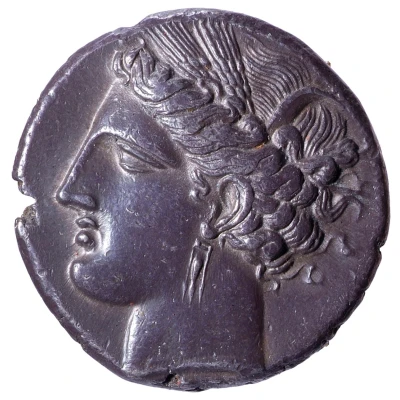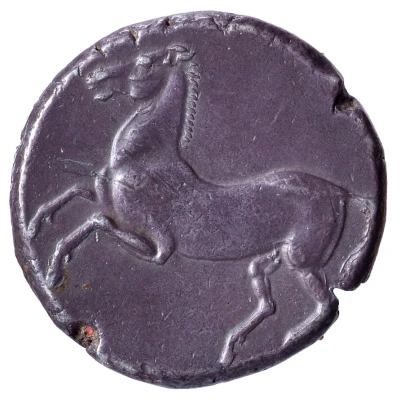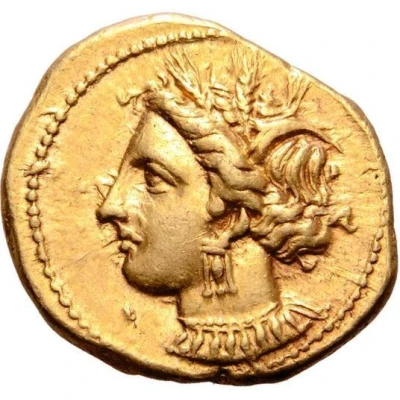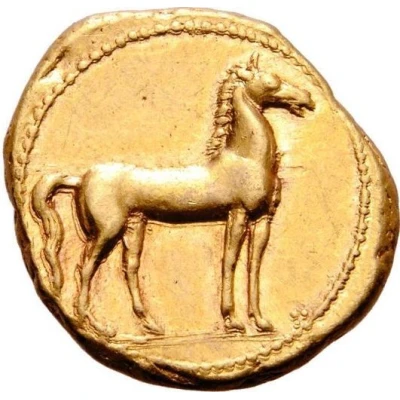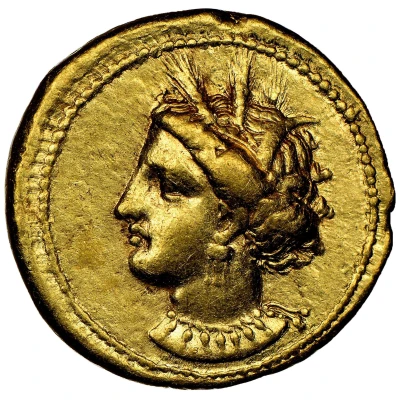
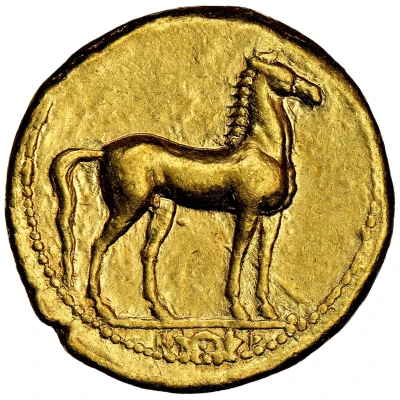

© Heritage Auctions
Stater 350 BC - 320 BC
| Gold | 9.45 g | 19 mm |
| Issuer | Carthage (Zeugitana) |
|---|---|
| Type | Standard circulation coin |
| Years | 350 BC - 320 BC |
| Value | Gold Stater (12) |
| Currency | Shekel |
| Composition | Gold |
| Weight | 9.45 g |
| Diameter | 19 mm |
| Shape | Round (irregular) |
| Technique | Hammered |
| Demonetized | Yes |
| Updated | 2024-10-09 |
| Numista | N#322791 |
|---|---|
| Rarity index | 100% |
Reverse
Horse standing right; pattern resembling inscription in exeregue; two pellets in lower field.
Interesting fact
The Carthaginian Stater coin was used as a form of currency in the ancient city of Carthage, which was located in what is now Tunisia. The coin features an image of the goddess Tanit, who was worshipped by the ancient Carthaginians, on one side, and a stylized image of a horse on the other. The coin was made of gold and weighed around 9.45 grams, making it a valuable and highly sought-after form of currency in its time. It's worth noting that the Carthaginian Stater was also used as a form of currency in other parts of the ancient world, including Greece and Rome, due to its high gold content and durability. This coin is a testament to the advanced economic and monetary systems of ancient civilizations, and it continues to be a fascinating piece of history for numismatists and collectors today.
